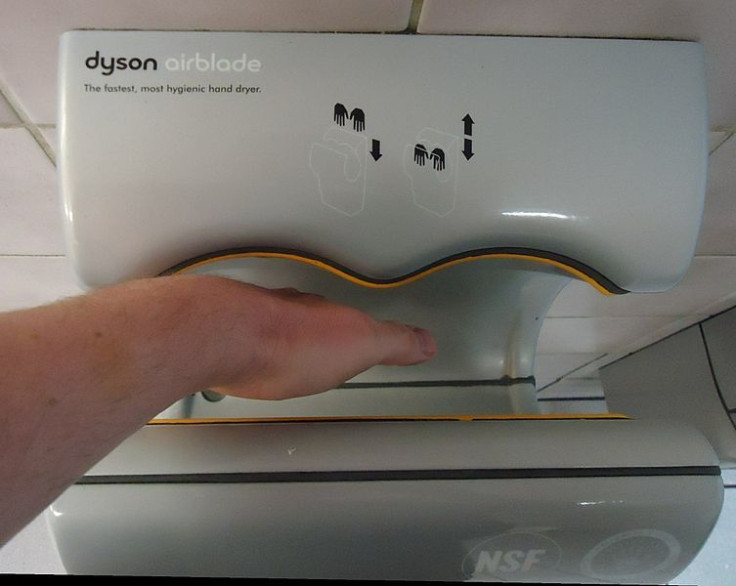Paper Towels Vs. Hand Dryer: Are You Making The Right Choice?

We've all been there before. You've just finished washing your hands, now it's time to dry them. Paper towels or hand dryer? It comes down to the convenience of having a machine dry your hands versus the time saved with a paper towel.
Well ponder no more as biomedical scientist at Queensland University of Technology, Cunrui Huang, gives us answers in his paper "The Hygienic Efficacy of Different Hand-Drying Methods: A Review of the Evidence."
For the basis of his findings, Huang included 12 studies from PubMed, Scopus, and Web of Science that focused on the effectiveness of various hand-drying methods. Hand-drying efficiency was defined by the speed of drying, degree of dryness, effective removal of bacteria, and prevention of cross-contamination.
Keeping your hands free of bacteria is the best way to prevent the spread of disease and infection. Prior research has shown that most forms of bacteria are more communicable on wet skin compared to dry skin.
Out of the three hand-drying options Huang analyzed, paper towels were considered the most preferable method. Not only does drying your hands with a paper towel stop the spread of bacteria, but data also showed that 90 percent dryness was achieved after 10 seconds of towel drying and 99 percent after 15 seconds.
Huang went as far to say, "Hand hygiene adherence would possibly decrease if paper towels are not available in washrooms."
The second option, hot-air dryers, could take up to 30 seconds longer than a paper towel to achieve maximum dryness.
"Rubbing hands while under hot-air dryers leads to greater bacterial numbers and airborne dissemination," Huang added. "It might be that rubbing hands causes bacteria to migrate from hair follicles to the skin surface."
The final option, jet-air dryers, successfully dried hands quicker than a hot-air dryer; however, the movement of air only led to bacteria being spread further, similar to heat dryers.
Published by Medicaldaily.com



























